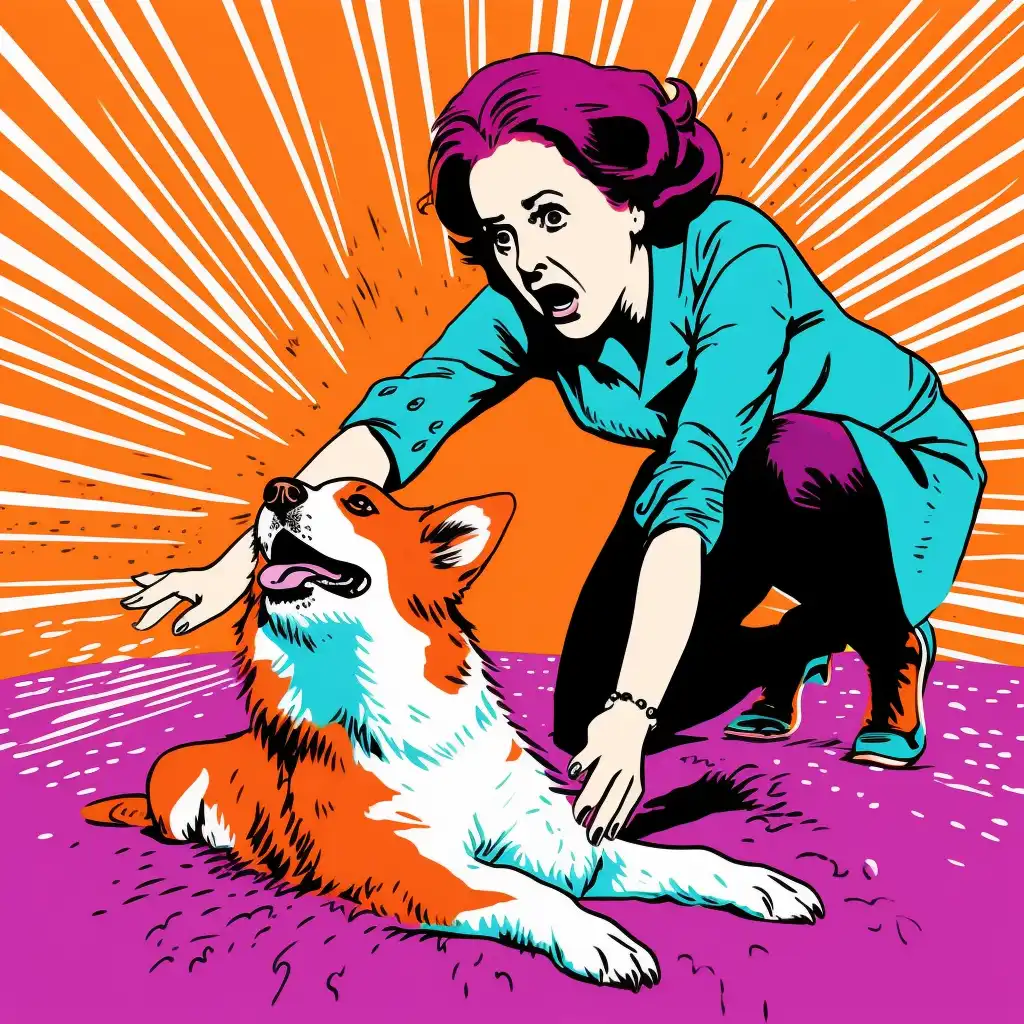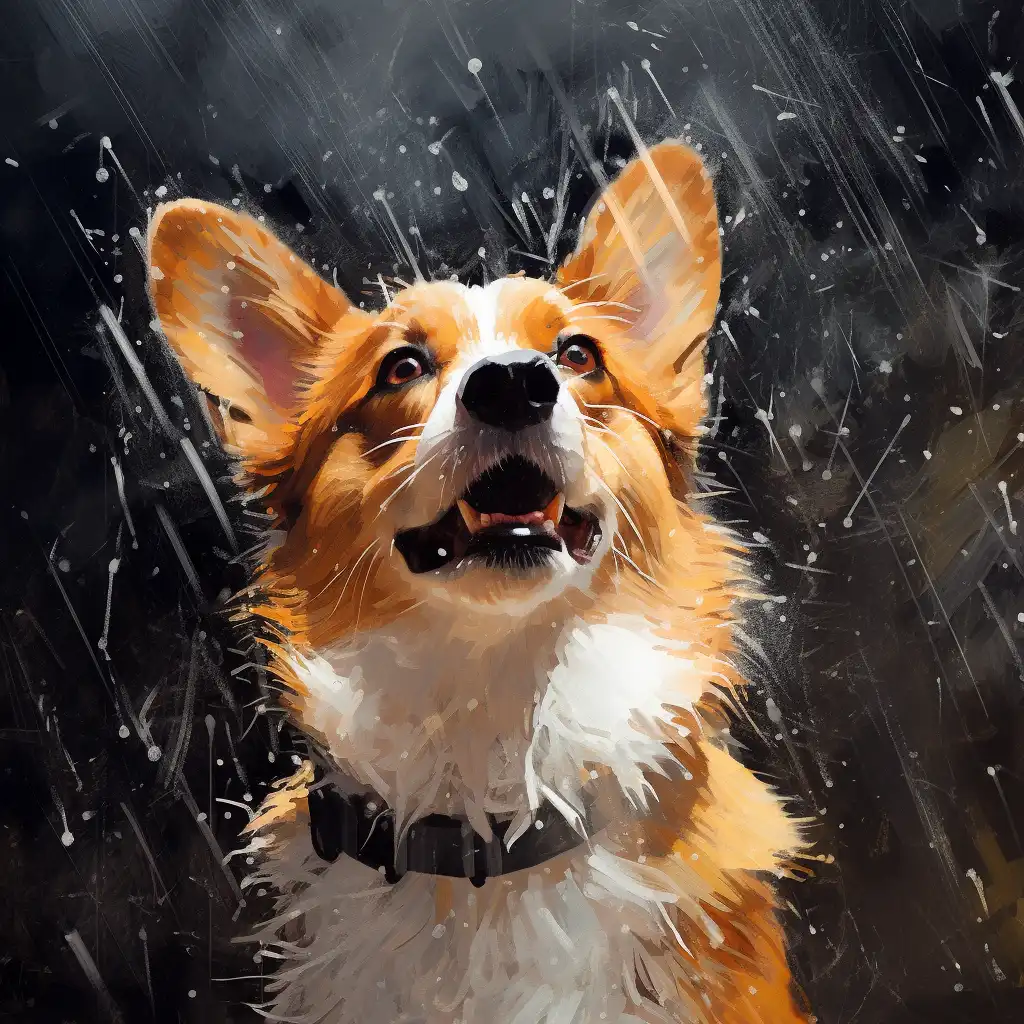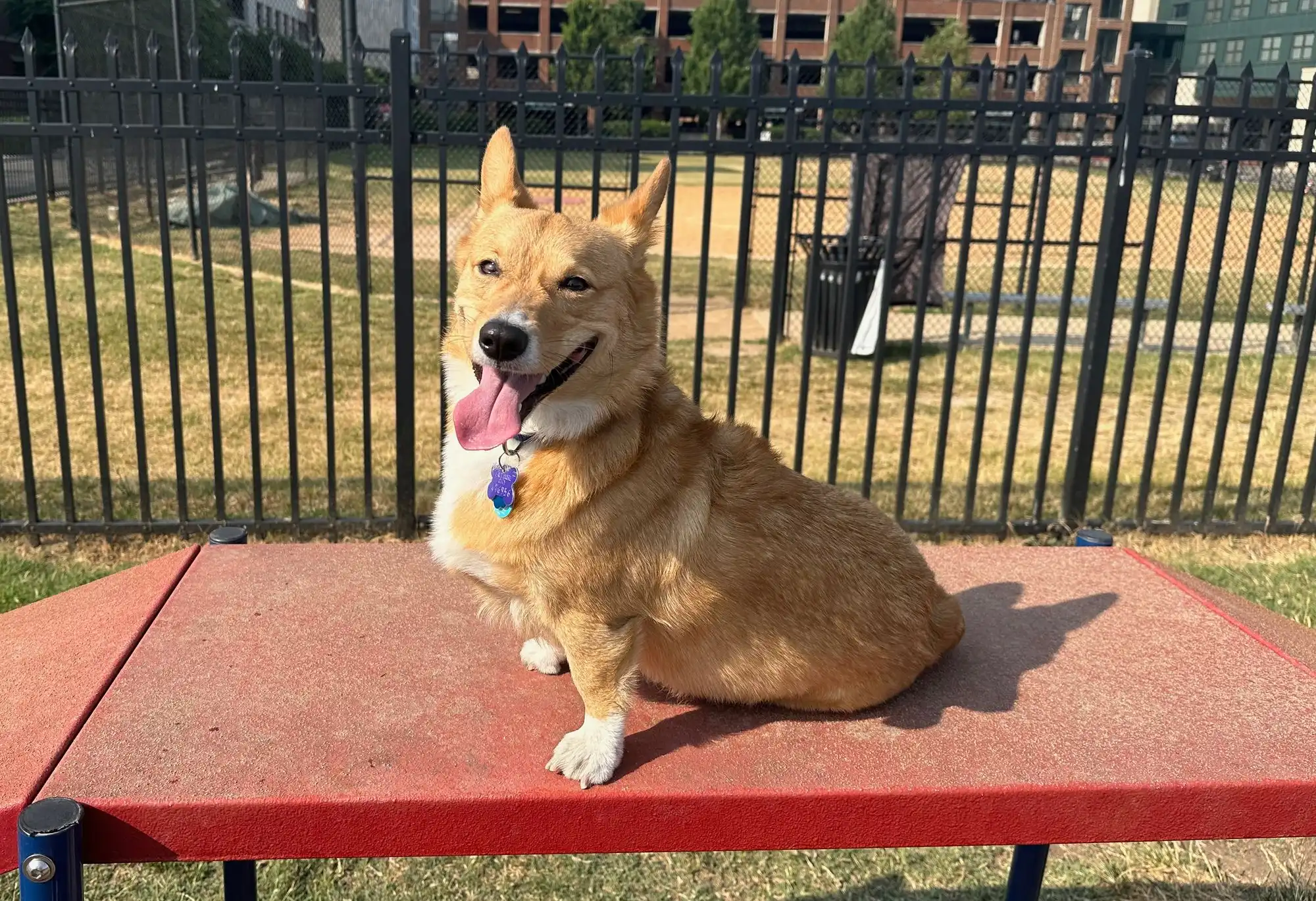Five Things I Wish I Knew Before Adopting a Corgi
Five things I wish I knew before adopting a corgi. Don't say I didn't warn you! If you already have a corgi, what do you think?

If you haven't checked it out yet, I posted the backstory of how I came to adopt my corgi, Monty, in the previous post. It's worth checking out. To summarize, he just kind of stumbled his way into our life; we weren't actively looking to adopt a corgi. But if I were, these are the five things I wish someone would have told me first.
They Shed, A Lot
It might surprise you to learn that, for a small breed, corgis do in fact shed. In fact, they shed a lot. If you don't have a corgi, take whatever you imagine "a lot" is, and quadruple it.
They have what's called a double coat, comprising a top and bottom coat. The top coat is really coarse meant to keep moisture and dirt off. The bottom coat is much softer and is what actually keeps them warm. [1]
Both coats are constantly shedding. Supposedly, they have two shedding seasons in the spring and fall. I've found that the first shedding season is from March through October and the latter from October through March. Careful readers will observe that's the entire year, and that's consistent with my experiences. My partner and I have joked that we should make mittens or something with all the hair.
I would go so far as to say that an iRobot Roomba is a necessity before getting a corgi. We lasted exactly three months with Monty before we capitulated and gave the Amazon overlords our money. Seriously, before that, I was vacuuming every other day. Before that experience, I never knew how large a two-bedroom apartment could feel.
For those curious, the iRobot Roomba i7 is the model that we have. It works really well for corgi hair. Just know that you won't be able to follow the manufacturer's recommended timeline for emptying the bin and cleaning the filter. We probably empty it once every other week.

It's not all bad, though. Because they shed a lot, you don't need to take your corgi to the groomer at all. There's absolutely no need to give your corgi a haircut. Just brush or comb them frequently. We do this about once every other day. I will do a follow-up post to show how we get Monty to tolerate it (and even enjoy it!).
They Are Low To The Ground
Okay, this one sounds really dumb. Of course, the dog with genetic dwarfism is going to be low to the ground. [2] But you probably don't think of all the things that go into that.
For one, this means that anything on the ground gets immediately lodged in their underside. This includes dirt, twigs, bottle caps, decades-old AOL Online CDs, and especially water (liquid and solid form!).
Every morning in the spring, we experience pretty heavy dew in Maryland. This leaves Monty's coat completely soaked. He doesn't really seem to mind. And neither do we, of course.
But you definitely should have a towel handy by the front door to dry them off as soon as they come in. We usually take off Monty's lease, immediately wrap him in a towel, and swaddle him like the precious baby he is. You can see these adorable pictures over on Monty's Instagram.

In the wintertime, while we no longer have to worry about dew, we have the same problem with snow and salt. So, besides drying him off and clearing the salt away, we have to bathe him more frequently. This might not be as much of a concern if you're not up north or hit with frequent snowstorms.
Some products, like this dog paw cleaner, that claim to clear the mud and salt off your pet's paws. We haven't really had success with them, but the great reviews on Amazon suggest others have better experiences. It might be worth a try. At the very least, it comes with three paw-cleansing towels!
They Require Lots of Physical Activity
I feel like this applies to most dogs, but I suppose I was a little surprised given how small they are. No one sees chihuahuas sprinting 500m. Corgis clear that easily. Where does the energy come from?
I would further imagine that their short legs prevent them from efficiently running and jumping. This is not the case. [3] Their short legs do not prevent them from zooming around your house, causing all manner of ruckus and kicking off small dust devils (this pairs well with all the hair they shed, see point #1).
Exercise can come in various forms. We live in a city where backyards are few and in between. So we take Monty out on long walks. Usually one mile before work, one mile after work, and one mile just after dinner. Based on my estimate, Monty has at least 2,600 on his little paws. That's enough to get from Baltimore to the California-Mexico border!
We also play with lots of toys. We found what claims to be an indestructible tuggie toy on Amazon (hint, it's not) that turned into Monty's favorite toy. The nice thing is that it's relatively cheap and easily wears him out after about fifteen or twenty minutes. No stuffing means that we don't have a million cotton ball fluff to pick up when he inevitably rips it up.
Finally, we are also blessed to live next to two parks. One park is well attended with lots of dogs his size (maybe because they're good apartment-sized dogs?) that he can play with. The other one is usually empty but has an agility course featuring a ramp, some poles to weave in between, and a small tube. Monty really enjoys it. That, or he really enjoys the treats we bribe him with.

Corgis Are Prone to Hip Dysplasia
Corgis are prone to what's called hip dysplasia. [4] Consider your hip bone. Your femur has a ball tip on it that slots into the socket in the hip. This is aptly called a ball and socket joint. You have ligaments that connect the two bones. Go ahead, rotate your leg to get the full picture.
It's the same for dogs. Hip dysplasia is caused when the ligaments holding the bones together loosen or there's otherwise an improper fit between the ball and socket. This is progressively degenerative. As in, your pup might be fine for a long while with this affliction, but inflammation and other wearing down of the joint may cause pain later in life. They might be slow to go up and down stairs or not want to exercise as much. [5]
Unfortunately, there is no cure for hip dysplasia. Your veterinarian may recommend anti-inflammatory or pain management medication. Monty's veterinarian recommended a glucosamine supplement which supposedly helps with joint health. I haven't read into the science yet, but I trust his vet. Dasuquin is the stuff they recommended, but I would talk to your vet first. Monty gets one every other day.
Our vet noted we can help prevent hip dysplasia by keeping Monty's weight in check. At around 25 pounds, he's a rather trim corgi. I guess those three miles a day really help!
I wish I would have known about his predisposition to hip dysplasia before getting him because I would have sooner reduced his high-impact activities. Monty is a couch dog. He absolutely loves pillows, blankets, cushions, and all things comfort. if his humans are on the couch, he's on the couch. When he gets the zoomies, he loves to jump up and down off the couch at high speed.
Unfortunately, this probably has too much impact on his joints and is now a habit we need to curb. We're looking into stairs for him to get up and down with. If I could start over, we would have never allowed him to jump up or down off the couch. The jumping might have even contributed to his ACL tear.
They Have Larger Than Life Personalities
This one is maybe more subjective than the others. Out of all the dogs I've had in my life and interacted with, Monty by far has the largest personality. We've had multiple friends tell us the same thing.
Here's a list of some of Monty's tics:
- Human-human affection, including kissing, holding hands, hair rubbing, or back scratching, is off limits. All attention must be given to Monty.
- Singing warrants severe side-eye. Though, maybe this is just because I'm a bad singer. I've never seen a dog behave like Jim from The Office.
- "No" is negotiable and will always be met with back-talk. Lots of borking.
- Hates the act of getting ready to go outside. Actively runs away when we grab the lease. Being outside is just okay, but he would rather be on the couch.
- Humans cannot run.
- Humans cannot be in different rooms of the house.
- If there is a blanket on the couch, it is Monty's.
- Humans cannot use the words "zoom", "whoosh", or "Kamehameha."
From talking with other corgi owners, it's not just us! We have several owners in the neighborhood who say their corgis do similarly weird things.
Back in college, I had a sponsor family who took me in to use their laundry machine, relax, and occasionally feed me. They had a corgi named Olive. Olive hated toasters, lamps, and phones. When the toaster dinged, she was there and ready to bark. Turning on or off lamps was a no-go. If there was a phone she could see, she would rip it out of your hands. It was hilariously sassy.

Does your corgi have any unusual behaviors that you've noticed? Let me know in the comments down below!
Anyway, these are the five things I wish someone had told us before we got Monty. Not that we wouldn't have adopted him. He's the best thing that's happened in our life. No amount of shedding can change that!
I'd love to hear from you. You can add your thoughts in the comments below by signing in. It's completely free and you can unsubscribe whenever you'd like.
References
[1] Whitaker, D. T., & Ostrander, E. A. Hair of the Dog: Identification of a Cis-Regulatory Module Predicted to Influence Canine Coat Composition. Genes, 10(5), 323. https://doi.org/10.3390/genes10050323
[2] Ansel, E., Schweizer, D., Jagannathan, V., Loechel, R., & Leeb, T. (2022). PCYT1A Missense Variant in Vizslas with Disproportionate Dwarfism. Genes, 13(12), 2354. https://doi.org/10.3390/genes13122354
[3] Williams, T. M., Ben-David, M., Noren, S., Rutishauser, M., McDonald, K., & Heyward, W. (2002). Running energetics of the North American river otter: Do short legs necessarily reduce efficiency on land? Comparative Biochemistry and Physiology Part A: Molecular & Integrative Physiology, 133(2), 203-212. https://doi.org/10.1016/S1095-6433(02)00136-8
[4] Schnelle, G.B. (1964), A Clinical Note: Congenital Hip Dysplasia in a Miniature Poodle. Journal of Small Animal Practice, 5: 365-366. https://doi.org/10.1111/j.1748-5827.1964.tb04264.x
[5] https://cardiganhealth.com/research/skeletal/hip-dysplasia/

